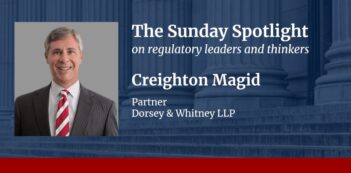
Despite their prevalence, regulatory performance standards and their efficacy have been understudied.
Performance standards appear to be one of the most favored ways to regulate, and yet we know too little about how well they perform.
By performance standards, we mean rules that command the avoidance or attainment of an end-state, giving individuals and businesses subject to regulation the opportunity to choose their own concrete actions, provided that the end-state commanded is satisfied. By focusing on an end-state and giving the targets of the regulation choice in how to achieve that end-state, performance standards theoretically will allow targets to select the least costly means of meeting the commanded level of performance. Performance standards also are said to allow for innovation and technological development in ways that means standards cannot typically accommodate.
Due to their theoretical advantages, performance standards have been widely lauded by academics and policy makers. Since the early 1990s, federal agencies in the United States have operated under a presidential order that admonishes them whenever feasible to “specify performance objectives, rather than specifying the behavior or manner of compliance that regulated entities must adopt.” The White House Office of Management and Budget (OMB) has elaborated that “performance standards are generally to be preferred to engineering or design standards because performance standards provide the regulated parties the flexibility to achieve the regulatory objective in a more cost-effective way.” More recently, President Obama’s 2011 executive order on regulation likewise stated that agencies “must” use performance standards whenever feasible.
As favorably as performance standards have been viewed, there are reasons to wonder how well they really work. For one thing, performance standards require that regulators and inspectors have a way of measuring performance. Yet sometimes measurement can be difficult because of the highly distributed nature of the problem, such as when ensuring compliance with emissions limits requires continuous monitoring of hundreds of thousands of smokestacks and pipes.
In addition, if performance standards are so narrowly defined that they permit regulated entities only one realistic option of what action to take, they provide no advantage over a means standard that compels that same action. As OMB has noted, it is “misleading and inappropriate to characterize a standard as a performance standard if it is set so that there is only one feasible way to meet it.”
Finally, performance standards may be somewhat more susceptible to the law of unintended consequences. For example, one study of performance-based building standards in New Zealand has suggested that the flexibility they afforded led to a major national “leaky building” crisis, with as many as tens of thousands of homes afflicted with extensive rotting. The building standards commanded performance in terms of durability and stability but not weatherproofing, which allowed builders to meet code using cheaper materials that met the performance requirements but did not adequately resist rain.
Another consideration with performance standards is that even though they provide individual regulated targets with flexibility needed to achieve cost savings, they often still treat all targets equally, meaning that every target has to meet the same level of allowable emissions. For example, in the environmental context, where the marginal costs of controlling emissions can vary across different businesses, uniform performance standards miss opportunities for flexibility and cost savings.
When only the marginal compliance costs, and not the marginal benefits of compliance, vary across a designated space, a more cost-effective way to attain the same level of overall benefit in that space would be to allow the end-state to vary from target to target, yet keeping the aggregate level of allowable harm the same. In theory, one way to do this for regulating environmental harms would be to set performance standards on an individualized basis for each regulated entity, so that those businesses with lower costs of control would be asked to reduce more pollution than firms with higher costs of control. As long as the average level of emissions remained the same, such a case-by-case approach would be superior to uniform performance standards because the same ambient environmental quality would be achieved at lower overall costs.
The obvious problem with this approach is the practical infeasibility of setting individualized standards when dealing with pollutants emitted from thousands of dispersed sources. One way to overcome this problem would be through a per-unit pollution tax that sets a price on each unit of pollution emitted by each source. A pollution tax is really a type of performance standard because the negative consequences backing up the system (i.e., taxes) are triggered by an end-state (i.e., the level of emissions). Under such an approach, the command changes from the conventional, uniform performance test, which tells targets to keep their emissions below an aggregate level in order to avoid large financial consequences, to one that tells them they will incur smaller financial consequences for every incremental unit of pollution they emit. Under the latter approach, targets can choose to abate pollution using any means they see fit—or to pay the tax. The tax would be the same for each targeted firm, but each firm would have greater flexibility because it would be allowed to respond to the tax according to its own marginal abatement costs.
When a tax approach is not feasible, another type of performance standard could be adopted: tradable permits. Tradable permits – such as, in the environmental context, emissions credits or allowances – represent a type of a performance standard because they require regulated firms to meet a stated performance level equal to the permits they possess. True, firms can free up permits by doing more than required and then can either trade those extra permits to other firms or “average” or “bank” those extra permits by doing less than required at another part of their operation or at a later date. As such, the levels of performance required of each firm will vary. But such non-uniform performance standards can in principle still achieve outcomes equal to those achieved by uniform performance standards but at a lower overall cost. Research on such non-uniform performance standards has generally confirmed that they can achieve more cost-effective outcomes than uniform performance standards.
The great appeal of performance standards – whether uniform or non-uniform – stems from a worthy desire to achieve regulatory goals while still preserving much-cherished freedom of choice, allowing for more cost-effective results. Yet despite the great interest in performance standards, existing research has only scratched the surface of what policymakers should know in order to determine when and how to craft performance standards with intended results. To date, research has focused on non-uniform performance standards such as taxes or tradable permits much more than on uniform performance standards.
We know of no systematic analysis comparing, in the same setting or for the same problem, the benefits and costs of uniform performance standards with those of less flexible standards imposing specified means on regulated firms. Admittedly, such empirical comparisons are not easy for researchers to make, but given the categorical commands now imposed upon agencies, that they must use performance standards whenever feasible, the gap in research is striking. The need for more research on the performance of performance standards is greater today than ever.
This essay draws on portions of Lori S. Bennear & Cary Coglianese, “Flexible Environmental Regulation,” forthcoming in the Oxford Handbook of U.S. Environmental Policy (Sheldon Kamieniecki & Michael Kraft, eds).





